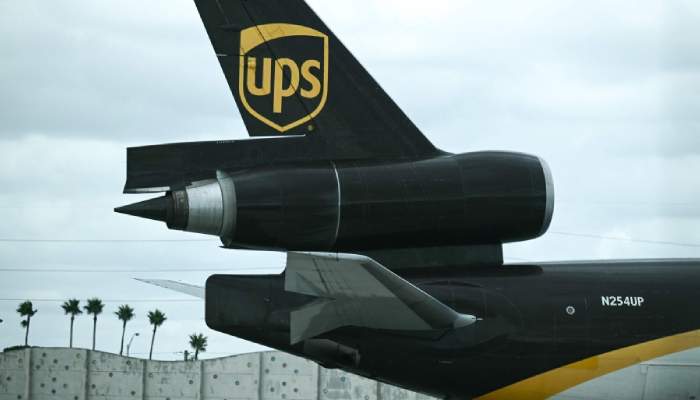UPS FedEx plane grounding has become a major topic of international aviation and logistics conversations following a tragic crash in Kentucky that resulted in the deaths of at least 14 people. The grounding affects a portion of the cargo fleets operated by two of the largest delivery companies in the world. The decision was made after a UPS aircraft caught fire and crashed shortly after takeoff, raising urgent questions about aircraft safety standards, fleet age, and risk prevention procedures.
The cargo plane involved, an MD-11F, burst into flames after colliding with nearby business buildings, triggering a fire large enough to destroy surrounding structures and temporarily halt operations at Louisville International Airport. Emergency crews and investigators rushed to the scene, where the scale of destruction required searching debris and damaged buildings to locate additional victims. Officials confirmed that search and recovery efforts continued for hours following the crash.
As the investigation continues, the UPS FedEx plane grounding is being treated as a precautionary measure, but one with statewide, national, and potentially global implications for delivery timelines. Both companies play a major role in international supply chains, and any disruption to aircraft availability can impact commercial deliveries, medical shipments, and time-sensitive logistics operations.

Why the UPS FedEx Plane Grounding Was Ordered
According to official statements, UPS initiated the grounding of MD-11 models in its fleet following direction from Boeing, the aircraft’s manufacturer. FedEx soon confirmed it would follow the same recommendation. This coordinated move suggests that the issue may involve deeper technical or operational risks that investigators are still working to identify.
Boeing publicly stated that its recommendation was made out of “an abundance of caution,” emphasizing that collaboration with the Federal Aviation Administration (FAA) is ongoing.
External Resource: https://www.faa.gov
While the cause of the crash remains under investigation, grounding this aircraft type signals a strong effort to prevent another similar incident while facts continue to emerge.
The Aircraft Model Involved and Its History
The aircraft involved in the crash was an MD-11F, a three-engine cargo jet originally manufactured by McDonnell Douglas. The MD-11 entered aviation service in 1990, and production ended in 2000. After McDonnell Douglas merged with Boeing in 1997, Boeing assumed support for the MD-11 fleet, which today remains primarily in cargo service.
UPS acquired the specific aircraft involved in the crash in 2006 after its original service life as a passenger jet with Thai Airways. The MD-11 has historically seen mixed operational reputations. While widely used in cargo fleets, aviation analysts have noted past challenges in landing performance and stability during takeoff under heavy fuel loads.
Understanding aircraft model aging and life cycle management is a continuing component of aviation safety research.
External Resource: https://www.ntsb.gov
Impact on Delivery Operations and Supply Chains
The UPS FedEx plane grounding affects a combined total of more than 50 aircraft across both companies. FedEx reportedly operates 28 MD-11 aircraft, while UPS has 27, representing roughly 9% of UPS’s fleet.
Both companies stated that contingency plans are in place to ensure ongoing delivery operations. However, even with replacement aircraft and adjusted routing schedules, some shipping delays may be unavoidable. This is particularly relevant for overnight air freight services, international distribution networks, and regions where MD-11s were heavily deployed.
For businesses relying on just-in-time deliveries, temperature-controlled logistics, or critical medical supply transportation, even minor delays may require temporary adjustments in scheduling.
How Investigators Are Approaching the Crash Analysis
The National Transportation Safety Board (NTSB) confirmed that the plane’s left engine caught fire and detached from the wing during takeoff, contributing directly to the severity of the crash and resulting explosion. The aircraft was carrying approximately 38,000 gallons (144,000 liters) of fuel for a long-haul flight to Hawaii, which significantly intensified the post-impact blaze.
Investigators are now examining:
-
The engine’s maintenance history
-
Possible mechanical stress factors
-
Pilot control records
-
Takeoff speed and angle data
-
Black box voice and data recorders (if recovered intact)
Crash investigations involving fires and structural collapse can take months before conclusions are released.

Community Reaction and Statements From Leaders
Louisville Mayor Craig Greenberg expressed condolences to the families of those killed, reaffirming the community’s support for survivors and recovery teams. The atmosphere surrounding the crash remains somber, with grief made heavier by ongoing uncertainty about additional victims.
UPS stated, “Nothing is more important to us than the safety of our employees and the communities we serve,” emphasizing safety as the central reason behind grounding part of the fleet.
Long-Term Implications of the UPS FedEx Plane Grounding
The ongoing situation may raise broader industry discussions about:
-
Aging aircraft life cycles
-
Maintenance schedules and inspection frequency
-
Fleet replacement planning
-
Aircraft model retirement timetables
As cargo transport demand continues to rise globally, ensuring that aging aircraft can operate safely remains a central aviation concern. For logistics-dependent companies and industries, these discussions influence future delivery reliability and pricing scales.

